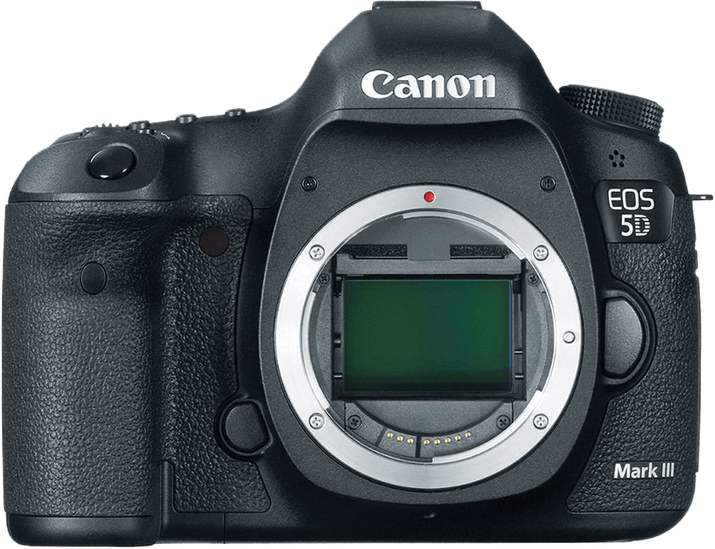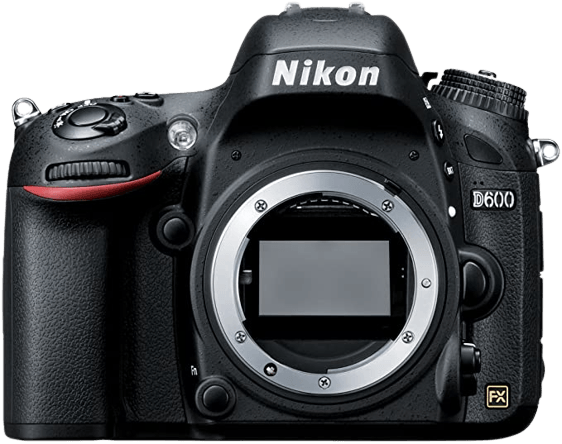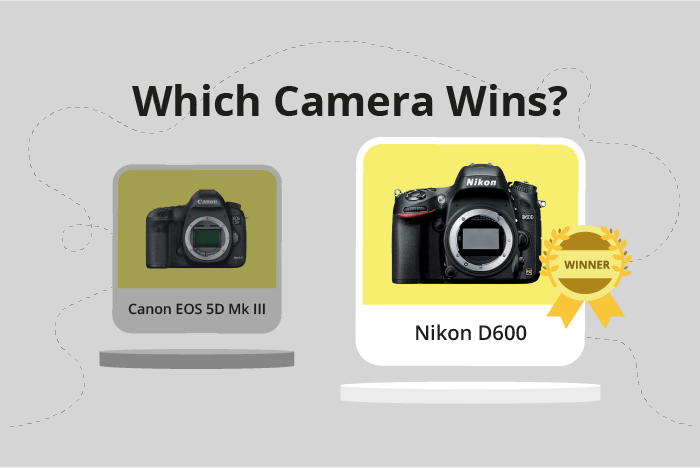Canon EOS 5D Mark III vs Nikon D600 Comparison
Canon EOS 5D Mark III

Nikon D600

The Nikon D600 narrowly edges out the Canon EOS 5D Mark III with a score of 66/100 compared to 65/100. Both cameras are DSLR models released in 2012, with the Canon 5D Mark III having a higher launch price of $3499 compared to the Nikon D600’s $2100. They share similar dimensions, but the Canon 5D Mark III is heavier at 950g compared to the Nikon D600’s 850g.
The Canon EOS 5D Mark III boasts better overall build quality and durability, justifying its higher price. However, the Nikon D600 offers a more affordable option without sacrificing much performance. While the Canon 5D Mark III may have a slight edge in some areas, the Nikon D600 proves to be a strong contender and a better value for the price.
Considering their scores, specifications, and price points, both cameras offer solid performance and features for their respective target markets. Ultimately, the choice between the two depends on individual preferences and budget.
Canon EOS 5D Mark III vs Nikon D600 Overview and Optics
The Nikon D600 triumphs over the Canon EOS 5D Mark III in optics with a score of 70/100 compared to Canon’s 67/100. Both cameras share several specifications, such as a CMOS sensor, full-frame sensor size, and the lack of image stabilization. They also feature their respective lens mounts, with Canon using the EF mount and Nikon using the F FX mount.
The Nikon D600’s higher optics score is due to its superior sensor performance, as evidenced by its DXOMARK sensor score of 94 compared to the Canon’s 81. This advantage allows the Nikon D600 to capture more detail and provide better image quality. Additionally, the Nikon D600 has a higher megapixel count at 24.3 compared to the Canon’s 22.3, which translates to higher resolution images.
On the other hand, the Canon EOS 5D Mark III has a faster shooting speed of 6 frames per second compared to the Nikon’s 5.5. This makes the Canon camera slightly better for capturing fast-moving subjects, such as sports or wildlife photography.
In terms of optics, the Nikon D600 emerges as the winner due to its superior sensor performance and higher megapixel count. However, the Canon EOS 5D Mark III does have an edge with its faster shooting speed. Ultimately, the choice between these two cameras depends on the photographer’s priorities and needs. If image quality and resolution are paramount, the Nikon D600 is the clear choice. However, if capturing fast-moving subjects is more important, the Canon EOS 5D Mark III might be the better option.
Canon EOS 5D Mark III vs Nikon D600 Video Performance
The Nikon D600 wins the video capabilities comparison by a narrow margin, with a score of 57/100, while the Canon EOS 5D Mark III scores 56/100. Both cameras have Full HD video resolution and max video dimensions of 1920 x 1080. However, there are differences in their video features that set them apart.
The Canon EOS 5D Mark III boasts a higher max video frame rate of 60fps, allowing for smoother and more detailed video footage. This feature is particularly useful for capturing fast-moving subjects and producing slow-motion effects. On the other hand, the Nikon D600 has a lower max video frame rate of 30fps, which may result in less smooth footage in certain situations.
In contrast, the Nikon D600 has a built-in time-lapse functionality, enabling users to create stunning time-lapse videos without the need for additional software or equipment. This feature is absent in the Canon EOS 5D Mark III, which may require additional effort and investment for those interested in time-lapse photography.
To summarize, the Canon EOS 5D Mark III excels in video frame rate, offering smoother and more detailed footage. However, the Nikon D600’s built-in time-lapse functionality gives it an edge for those looking to create time-lapse videos. With only a one-point difference in their video scores, both cameras have their merits and drawbacks in terms of video capabilities. Ultimately, the choice between the two depends on the specific needs and preferences of the user.
Canon EOS 5D Mark III vs Nikon D600 Features and Benefits
The Canon EOS 5D Mark III wins the features comparison with a score of 59/100, while the Nikon D600 trails close behind at 57/100. Both cameras share some common specifications, such as a 3.2-inch screen size, lack of touchscreen and flip screen, no GPS, and no Bluetooth.
The Canon EOS 5D Mark III excels with its screen resolution of 1,040,000 dots, which is higher than the Nikon D600’s 921,000 dots. This difference in screen resolution allows for a clearer and more detailed image preview on the Canon camera, providing a better experience for photographers during shooting and image playback.
On the other hand, the Nikon D600 has a distinct advantage over the Canon EOS 5D Mark III in terms of wireless connectivity, as it comes with built-in Wi-Fi. This feature allows users to easily transfer images to a connected device or control the camera remotely, which can be very useful in various shooting situations, like group photos or wildlife photography. The Canon EOS 5D Mark III lacks this convenient feature.
In conclusion, the Canon EOS 5D Mark III has a slight edge in features due to its higher screen resolution, providing a better image preview experience. However, the Nikon D600 offers the advantage of built-in Wi-Fi, which can be a deciding factor for photographers who value wireless connectivity. Ultimately, the choice between the two cameras depends on the individual’s preferences and priorities when it comes to features.
Canon EOS 5D Mark III vs Nikon D600 Storage and Battery
The Canon EOS 5D Mark III outperforms the Nikon D600 in storage and battery with a score of 76/100 compared to the Nikon’s 71/100. Both cameras have two memory card slots and accept SD, SDHC, and SDXC cards. However, the Canon 5D Mark III also supports Compact Flash and UDMA cards, providing more storage options.
In terms of battery life, the Canon 5D Mark III has a slight advantage with 950 shots per charge, while the Nikon D600 offers 900 shots. The Canon uses an LP-E6 battery, while the Nikon uses an EN-EL15 battery. Neither camera has USB charging capabilities.
Though the Nikon D600 falls short in storage options and battery life, it still offers a decent battery life of 900 shots, making it suitable for most photography needs. The Canon EOS 5D Mark III’s higher score reflects its superior storage options and longer battery life, making it the better choice for photographers who require more flexibility and longer shooting sessions.
Canon EOS 5D Mark III vs Nikon D600 – Our Verdict
Are you still undecided about which camera is right for you? Have a look at these popular comparisons that feature the Canon EOS 5D Mark III or the Nikon D600:

